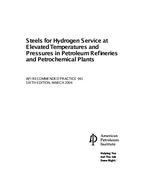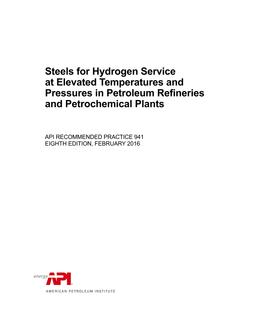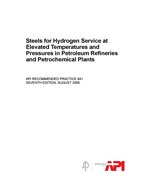Click here to purchase
This recommended practice summarizes the results of experimental tests and actual data acquired from operating plants to establish practical operating limits for carbon and low alloy steels in hydrogen service at elevated temperatures and pressures.
Product Details
- Edition:
- 6th
- Published:
- 02/01/2004
- Number of Pages:
- 32
- File Size:
- 1 file , 640 KB
- Product Code(s):
- C94106, C94106, C94106
- Note:
- This product is unavailable in Cuba, Iran, North Korea, Syria


